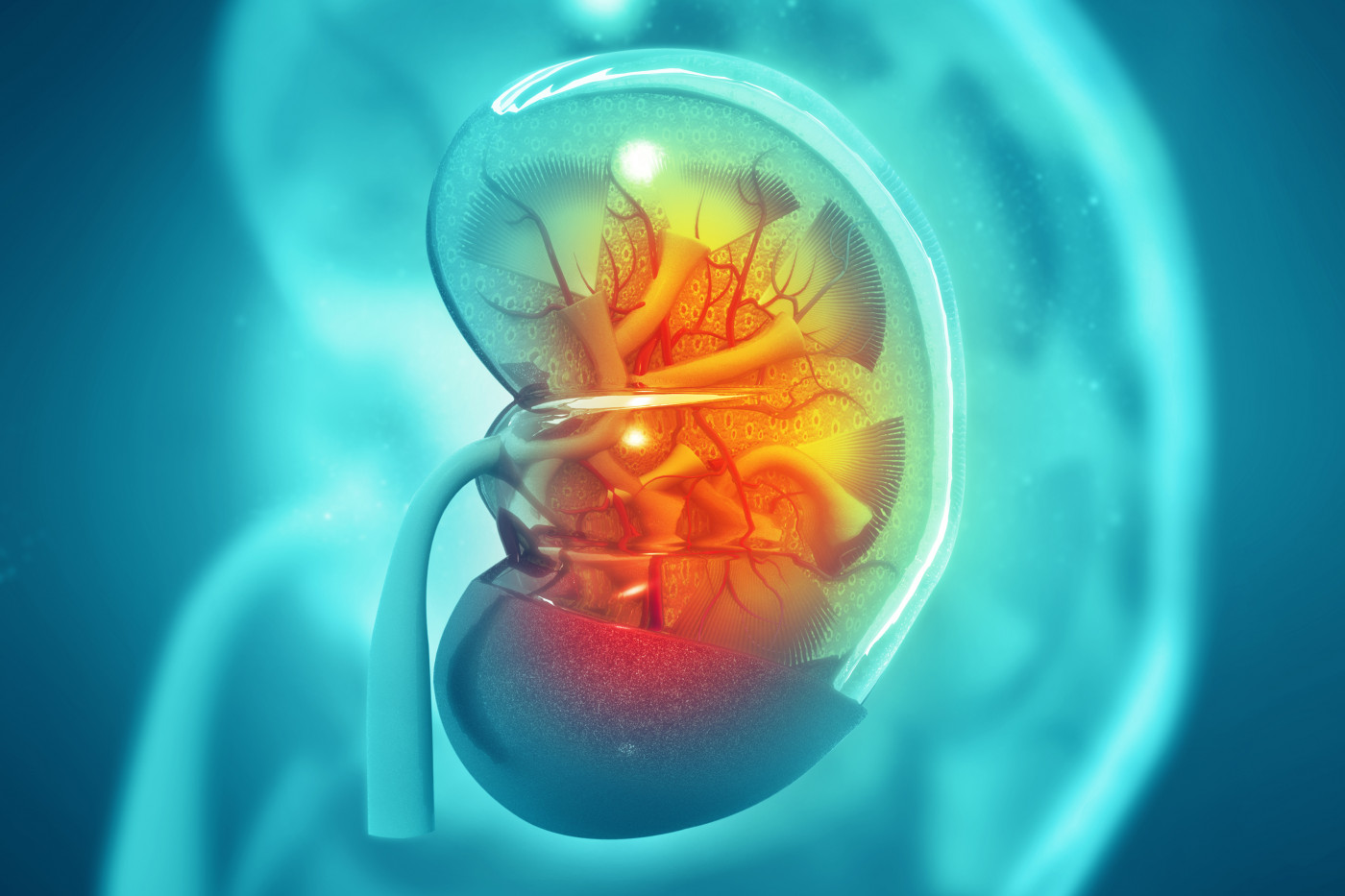Starting ERT Before Kidney Disease Onset Leads to Better Outcomes
Written by |

crystal light/Shutterstock
In people with Fabry disease, starting enzyme replacement therapy (ERT) before the onset of chronic kidney disease — known as CKD — is linked with better outcomes, according to a Spanish retrospective study.
Indeed, patients with CKD at the start of ERT had an increase of three to seven-fold in the risk of clinical events, including renal, neurological, and heart problems, the study found.
“The initiation of early enzyme replacement therapy before the development of CKD would improve the prognosis,” the researchers wrote.
The study, “Predictors of outcome in a Spanish cohort of patients with Fabry disease on enzyme replacement therapy,” was published in the journal Nefrología.
Fabry is a rare genetic disorder caused by mutations in the GLA gene, located in the X chromosome (one of the two sex chromosomes), and with instructions for the production of alpha-galactosidase A (Gal A) enzyme.
The mutations result in the enzyme’s absence or markedly reduced activity, leading to the toxic accumulation of two fat molecules — Gb3 and lyso-Gb3 — in the heart, kidneys, nervous system, eyes, and skin. The kidney is one of the most affected organs, with patients often developing chronic kidney disease.
ERT and chaperone therapy are the two standard-of-care treatments for Fabry disease. In ERT, patients are given an enzyme that can replace the missing Gal A. In the U.S., Fabrazyme (agalsidase beta) is the only approved ERT for Fabry disease; another ERT, Replagal (agalsidase alpha), has been approved in the U.K., Israel, and other nations.
Both Fabrazyme and Replagal have been approved for use since the early 2000s in various countries. However, how CKD, as well as heart or neurological events, impact a patient’s response to ERT therapy remains unclear.
Now, a group of researchers in Spain conducted a retrospective analysis of 69 patients diagnosed with Fabry disease who received ERT for a median period of five years (60 months, range 24–120 months). In all, there were 27 women and 42 men, with a mean age at diagnosis of 42.
Kidney function was assessed by measuring the levels of albumin protein in urine, with abnormally high content — called albuminuria — defined as a creatinine ratio (ACR) of more than 30 milligrams of albumin per gram (mg/g) of creatinine. CKD was defined when the estimated glomerular filtration rate or eGFR, a measurement of kidney function, dropped below 60 ml/min/1.73 square meter.
Classic Fabry disease, a more severe form of the disease due to very low or absent Gal A, was diagnosed in 85% of the women and 57% of men, while the remaining patients had late-onset disease.
Men were generally younger and had significantly lower eGFR — indicative of worse kidney function — at the time of starting ERT compared with women. Specifically, the men had a mean of 61.2 ml/min/1.73m2 versus 84.4 ml/min/1.73 m2 for the women.
After a median of five years on ERT, the eGFR increased in both men (from 61.2 to 64.9 ml/min/1.73 m2) and women (from 84.4 to 92.1 ml/min/1.73 m2). However, in women, this was accompanied by a reduction in the albumin content in urine, while in men the albumin levels increased.
No differences were seen between the sexes in the function and structure of the heart after starting ERT.
At the end of the five years of follow-up, the eGFR remained stable in patients treated with ERT, irrespective of it being agalsidase beta or agalsidase alpha. The levels of albumin in urine, however, tended to be reduced further in those given agalsidase beta (Fabrazyme).
During follow-up, a total of 21 patients (30%, 13 men and eight women) had a first incident clinical event. These included six renal, two neurological, and 13 heart events. Notably, in three cases the heart incident led to the patient’s death.
Among the renal events included the need to start dialysis (five cases) and one kidney transplant. The neurological events were strokes.
The analysis revealed that the clinical events were significantly more frequent among patients with CKD — mean eGFR of 55.1 ml/min/1.73 m2 — and with higher ACR (mean 440 mg/g). Most patients who had had a clinical event were diagnosed with the classical disease (19 of 21 patients).
Also, patients diagnosed with CKD before the start of ERT had a three to seven times higher risk of clinical events. Women also were at higher risk.
Statistical analysis revealed that the levels of eGFR at the start of ERT were the main predictor for the risk of clinical events, for both men and women.
Overall, “renal function at the start of ERT is the main predictor of the development of long-term clinical events,” the researchers wrote.
“ERT should be initiated early in the course of the disease, early meaning according to the present report, at least before renal function decreases,” the team concluded.








